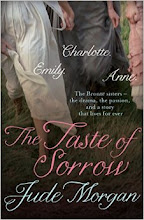Between 1880 and 1930, some of the greatest artists in the world turned their considerable talents to illustrating children's books. Peter Pan, Alice in Wonderland, and The Water Babies were inevitably popular choices, but many artists also looked to Fairy Tales for inspiration. I have collected here a small selection of my personal favourites by artists whose work you will be more than a little familiar with - and perhaps a few to whom this is your first introduction. Explore them further, I urge you. I grew up with many of these pictures, and they still have the power to make my heart beat faster in wonder.
Arthur Rackham (1867 - 1939) is probably the best known children's story illustrator of the time - maybe of all time. His Art Nouveau style never patronised, and his use of muted colours instilled a twilight realism into every image. Below is a scene from Cinderella (or Aschenputtel) and below that, from The Goose Girl:


These next two are from Peter Pan in Kensington Gardens, and exhibit a dangerous beauty all of their own:


Over the Atlantic, Jessie Willcox Smith (1863 - 1935) was creating similarly dark illustrations, in which many of her heroines seem to cower and shy away from the fairy folk that approach them, as seen here in Cinderella and Snow White:


Kate Greenaway (1846 - 1901) had, of course, been drawing for children for a long time by the 1880s, and her pictures provide a sharp contrast to the threat that seems to lurk inside the pictures of Rackham and Smith. Greenaway was all about spring and meadows and flowers and washed out pastels. Here she shows tea parties and picnics in benign settings:


Likewise, Mabel Lucie Attwell (1879 - 1964) developed a twee style that is instantly recognisable as her own, but she was not averse to tackling some of Anderson's darker stories, such as The Ugly Duckling:

Even Edward Burne Jones (1833 - 1898), arguably the most talented of the Pre-Raphaelites, sourced ideas from Fairy Tales, using his trademark rich colours to imbue weight and depth to the stories he illustrated. This is taken from a series of pictures of Sleeping Beauty:

Edmund Dulac (1882 - 1953) is, for me, the most alluring of children's illustrators. His pictures from the Snow Queen have adorned my walls all my life, and he is part of the reason this is my favourite Fairy Tale. There is a loneliness, a haunting aspect, to his characters that really touches a nerve in me. Can you make out the Snow Queen herself in this first image?


And this, from the Little Mermaid, demonstrates again Dulac's simultaneous coldness and warmth:

Kay Nielsen's (1886 - 1957) work is more stylised, as shown in this illustration for The Tin Soldier:

...as is that of Wilhelmina Drupsteen (1880 - 1966). These two come from Snow White:


All of these artists influenced the way children's books were illustrated for decades to come, and in no work is this more evident than that of twin sisters Janet and Anne Grahame Johnstone (1928 - 1979 and 1998 respectively). I have shelves of books from my own childhood that have been lovingly brought to life by these two exceptional artists. Their prescision is phenomenal, and their use of light... well, you only have to look at these few examples to understand. This first is from The Princess and The Pea. Look at her dripping skirt!

 The above illustration for The Little Match Girl is, to me, so flawless that even without knowledge of the story, it can break hearts. The truly beautiful can do that, I think.
The above illustration for The Little Match Girl is, to me, so flawless that even without knowledge of the story, it can break hearts. The truly beautiful can do that, I think.
And this, from The Frog Prince, pulls together flavours of the medieval and the Roaring Twenties in one single image that seems to even smell of wet trees and damp rock.



5 comments:
What a very beautiful post.
Thank you.
A beautiful post. While I admire some of the children's illustrators of today, Nick Sharrat and Lauren Child spring to mind, I agree with your thoughts.
I was wondering if you knew what book the little match girl illustration came from because I had this book as a child and I am desperately trying to find the exact Hand Christian Andersen book this came from.
Daddy Dose, I think it came from The Deane Gift Book of Fairy Tales, which I was given in the 1970s. It had an orange flyleaf cover, but the only one I can find online has a blue cover, though it looks similar. The Deane publishers used Anne and Janet Grahame Johnstone as illustrators a lot - I have a Nursery Rhyme book that seems to match the fairy tale one. I can't find the book right now - I think it may live at my mum's, so I'll see if I can find out any more next time I go home.
Lulu
xx
wonderful! and a few others I love.. N C Wyeth, Walter Crane, Maxfield Parrish, Beatrix Potter
Post a Comment